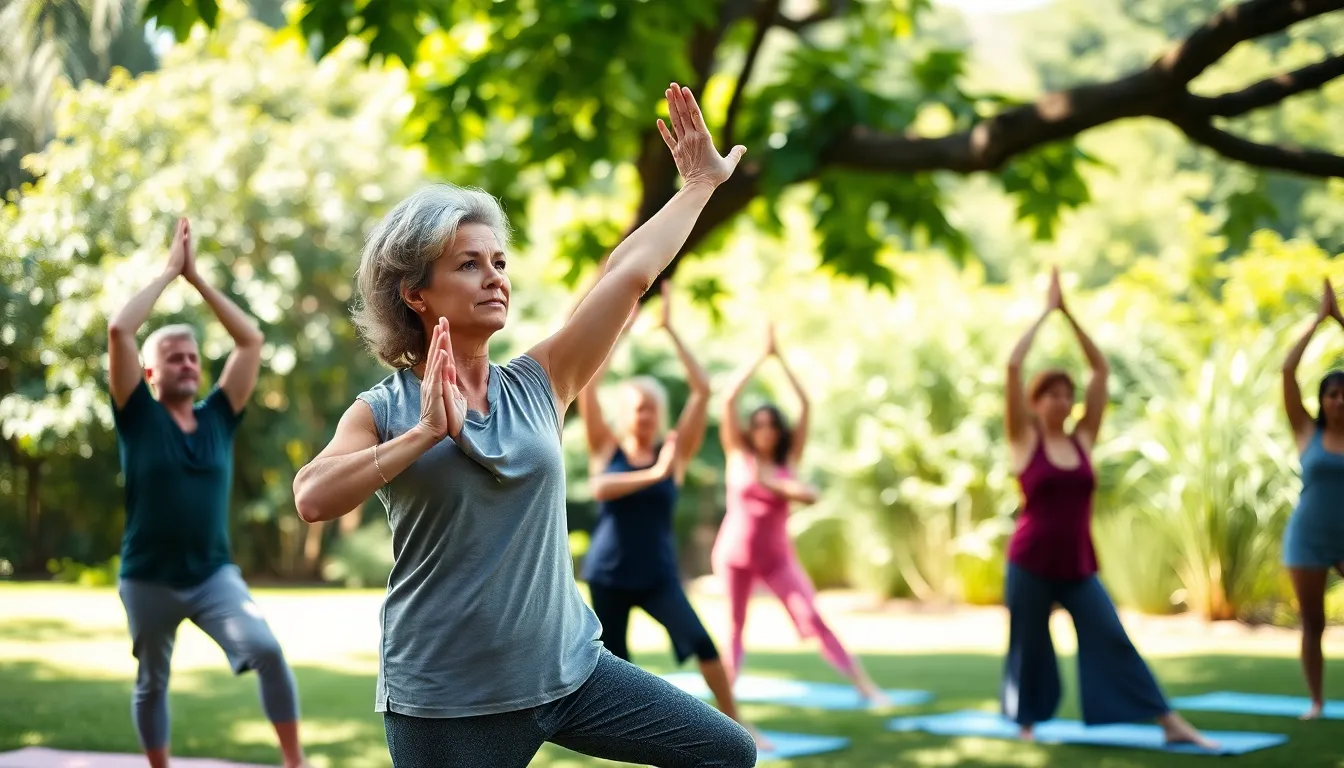Table of Contents
ToggleIn a fast-paced world filled with distractions, the concept of mindful workouts is gaining momentum. This innovative approach combines physical fitness with mental awareness, allowing individuals to connect deeply with their bodies and minds during exercise. Instead of simply going through the motions, practitioners focus on their breath, movements, and the sensations that arise, transforming their workout into a holistic experience.
Mindful workouts not only boost physical health but also enhance mental clarity and emotional well-being. By cultivating presence and intention, individuals can reduce stress and improve their overall workout effectiveness. Whether through yoga, pilates, or mindful running, these practices offer a refreshing alternative to traditional fitness routines, making exercise a more enriching and fulfilling experience.
Understanding Mindful Workouts
Mindful workouts combine physical fitness with mental awareness, focusing on the connection between body and mind. They prioritize intentional movement and present-moment awareness to enhance one’s exercise routine.
Definition and Principles
Mindful workouts involve practices that emphasize awareness during physical activity. Key principles include:
- Breath Awareness: Focusing on breath helps regulate energy and maintain concentration, creating a calming effect.
- Controlled Movement: Engaging in slow, deliberate movements reduces the risk of injury while promoting mindfulness.
- Sensory Connection: Attuning to physical sensations and body cues enhances the overall experience and fosters a deeper connection to one’s body.
- Focused Intent: Setting clear intentions before workouts encourages a purposeful mindset, increasing motivation and engagement.
Benefits of Mindful Workouts
- Improved Mental Clarity: Mindfulness during workouts fosters cognitive function, enhancing focus and decision-making skills.
- Reduced Stress Levels: Regular practice lowers stress hormones, contributing to emotional balance and resilience.
- Enhanced Physical Performance: Increased body awareness leads to better coordination and efficiency in movement.
- Greater Emotional Well-being: Mindful workouts promote positive emotions, helping individuals cultivate a more rewarding relationship with fitness.
Popular Mindful Workout Techniques

Mindful workouts encompass various techniques that enhance physical fitness and mental awareness. These practices foster a deeper connection between the body and mind, enriching the overall workout experience.
Yoga and Its Variations
Yoga integrates physical postures, breath control, and meditation, emphasizing mindfulness throughout the practice. Hatha yoga focuses on physical alignment, promoting strength and flexibility, while Vinyasa yoga links breath with continuous movement, enhancing the flow of energy. Restorative yoga utilizes props to support the body in gentle poses, promoting relaxation and stress relief. Each variation facilitates present-moment awareness, enabling practitioners to cultivate mental clarity and emotional peace.
Tai Chi and Qigong
Tai Chi and Qigong are ancient Chinese practices focusing on slow, deliberate movements combined with breath. Tai Chi emphasizes fluid motion and balance, promoting physical coordination while calming the mind. Qigong incorporates dynamic movements and meditation, enhancing energy flow throughout the body. Both techniques foster mindfulness by centering attention on the present, reducing stress and increasing overall well-being. Practitioners often report enhanced focus, improved balance, and increased emotional resilience through these mindful practices.
Creating Your Mindful Workout Routine
Creating a mindful workout routine involves intentional planning and focus. By incorporating specific strategies, individuals enhance both physical fitness and mental awareness.
Setting Goals
Setting clear, achievable goals serves as the foundation of a mindful workout routine. Individuals can define short-term and long-term objectives that promote physical and mental growth. Short-term goals may include practicing yoga three times per week or completing a mindful run every Saturday. Long-term goals can involve improving flexibility, enhancing strength, or developing greater emotional resilience. Writing down goals and tracking progress fosters commitment and accountability.
Incorporating Mindfulness into Your Sessions
Incorporating mindfulness into workout sessions enhances the overall experience. Individuals can focus on the following elements:
- Breath Awareness: Concentrating on breathing helps maintain a steady rhythm during exercises. Inhale deeply through the nose and exhale gently, synchronizing breath with movement.
- Sensory Connection: Pay attention to body sensations, such as muscle tension and relaxation. Acknowledge these feelings to deepen the present-moment experience.
- Mindful Movement: Engage in slow, controlled movements. Whether practicing yoga poses or weightlifting, performing exercises with intention promotes focus and reduces the risk of injury.
- Body Scan: Implement a body scan before and after workouts. This practice enhances awareness of physical sensations and encourages relaxation.
- Mid-Session Check-Ins: Pause periodically during workouts to check in with thoughts and feelings. This practice fosters emotional awareness and keeps individuals grounded.
Following these strategies cultivates a mindful approach to workouts, promoting a holistic connection between body and mind, ultimately enriching the overall fitness experience.
Tips for Enhancing Your Mindful Workouts
Enhancing mindful workouts involves practical techniques that deepen the connection between body and mind. Incorporating specific strategies can improve focus and effectiveness during physical activity.
Techniques to Stay Present
- Body Scans: Conducting a body scan at the start of the workout allows individuals to assess physical sensations and tensions. This practice cultivates awareness of the body and promotes relaxation.
- Mindful Movement: Engaging in slow, deliberate motions encourages attentiveness to each movement. Focusing on how each exercise feels helps practitioners maintain presence throughout the routine.
- Sensory Engagement: Tuning into sensory experiences enhances awareness. Observing sounds, sights, and textures in the surroundings can foster a deeper connection with the workout environment.
- Intentional Rest: Incorporating short breaks throughout the workout allows for reflection on thoughts and feelings. This practice can help reset focus and establish a clearer mental state when resuming exercises.
Breathing Exercises
- Diaphragmatic Breathing: Practicing deep, diaphragmatic breathing increases oxygen flow and promotes relaxation. This technique enhances focus by grounding individuals in the present moment.
- Rhythmic Breathing: Synchronizing breath with movement, such as inhaling during a stretch and exhaling during exertion, aids in maintaining rhythm during the workout. This alignment creates a harmonious experience.
- Counting Breaths: Counting breaths provides a simple focal point. By counting inhalations and exhalations, individuals can minimize distractions and reinforce mindfulness throughout the session.
- Affirmation Breathing: Pairing breaths with positive affirmations reinforces intention. Inhaling while stating an affirmation builds a mental connection to personal goals, enriching the workout experience.
Mindful workouts offer a transformative approach to fitness that goes beyond physical exertion. By fostering a deep connection between body and mind, individuals can experience enhanced well-being and emotional resilience. Embracing practices like yoga and Tai Chi allows for intentional movement and present-moment awareness, creating a fulfilling workout experience.
Incorporating mindfulness into exercise routines not only improves physical performance but also reduces stress and cultivates mental clarity. As more people discover the benefits of mindful workouts, they’ll find that fitness becomes a holistic journey rather than a mere task. This shift towards mindfulness in exercise paves the way for a healthier lifestyle and a more rewarding relationship with movement.



